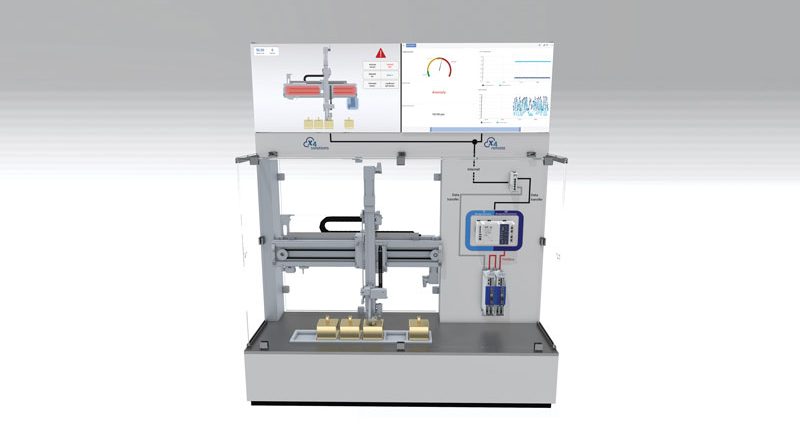When the Drive Works as a Sensor
Smart Condition Monitoring delivers real-time condition monitoring with no additional measurement sensors: the machine’s devices work as sensors. Lenze explains its approach and its solutions
Topics such as predictive maintenance and predictive models based on artificial intelligence (AI) are currently of great interest in mechanical engineering. But a lot of customers have no real idea of the kind of predictions that can be made. All they are interested in is monitoring machines and processes. Today, through Lenze technology, it is possible to create a condition monitoring application that provides extensive information about the “state of health” of machines and plants without the need for any additional sensor technology.
The difference from predictive maintenance
Condition monitoring and predictive maintenance are repeatedly treated as being synonymous but are in fact two very different concepts. Predictive maintenance is the prediction of events or the probability of events, for example if the probability of a fault occurring in a gearbox within the next 50 operating hours rises to over 90%. This kind of prediction could be used to plan the replacement of a gearbox in due time before the machine or plant does in fact break down. Condition monitoring, on the other hand, is a pre-stage that permits a more detailed description of the current state by interpreting the available data. This requires a deeper understanding of the machines and processes so as to generate meaningful information from the “bare” data. Analyses based on machine learning and AI can help identify anomalies faster.
No additional sensor technology
The fact that the added value offered by condition monitoring is not associated with higher hardware costs makes it particularly interesting for OEMs. This is because no additional sensors are needed. The trick with this solution is to extract the added information value from data sources that are already available. Lenze provides pre-tested algorithms for various applications and helps mechanical engineers turn their process expertise and knowledge of machines into a Condition Monitoring model that will improve efficiency.

A robot application case to show two different approaches
Thanks to an example of a 2-axis robot, the automation provider demonstrates this principle by showcasing two different approaches. One of these is model-based, where the actual values that are measured are compared with those from the assumed mathematical description of the machine. If certain tolerances are exceeded, this is interpreted as a fault. The other approach is data-based. An algorithm learns the system’s behavior and the reciprocal influences of various parameters, for example velocity, acceleration, torque, position and current consumption. The real values are compared with the learned description so as to define deviations. The demonstrations simulate issues such as increased friction on the spindle and wear on the belt drive. The anomalies can be detected in both cases through current and torque values, be this through an absolute increase in the value or through anomalies in the frequency analysis. Condition monitoring raises the alarm in both cases and shows the causes on a dashboard.
The use of cloud solutions
The two condition monitoring approaches differ not only in terms of their concept. The question as to how this data is evaluated also has different answers. The model-based evaluation usually takes place on the control system because it does not require any significant computing power. Machine learning and AI analyses used for data-based evaluations are normally implemented as a cloud application.Lenze’s portfolio gives the OEM complete freedom of choice. This includes a number of different three-dimensional PLCs for model-based condition monitoring. Data-based evaluation can also be carried out locally if the powerful c750 cabinet controller is used. Alternatively, a route to the cloud can be provided using the x500 gateway. Combined with the x4 platform, mechanical engineers have a turnkey cloud solution that covers not only condition monitoring but also remote maintenance for the machine and user-friendly asset management.

